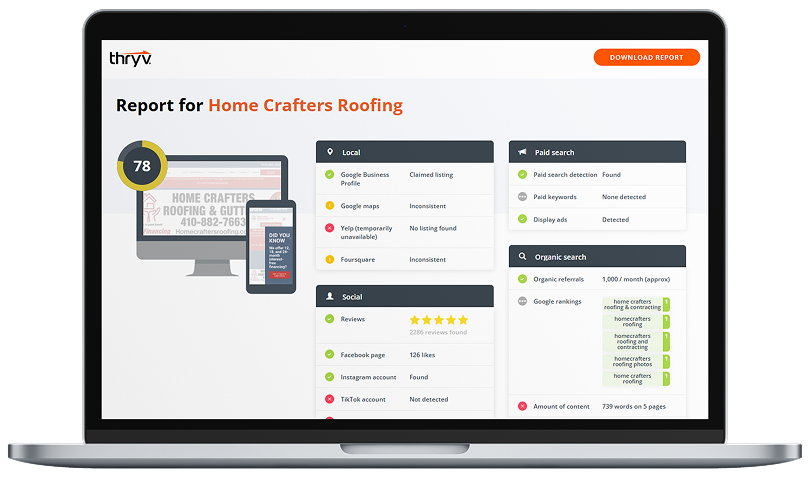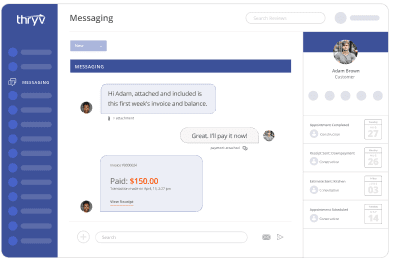When you’re running a small business, marketing is just one of many hats you wear, so it’s no surprise that specific details can fall through the cracks. Most companies aren’t making huge, obvious blunders.
Instead, it’s the small, repeated missteps that chip away at your growth. But over time, those small oversights add up and quietly drive customers away, even when your service or product is strong. Small businesses across industries tend to make a handful of marketing mistakes time and time again. The good news? Most of them are fixable with a little strategy and the right tools in place. In this blog, we’ll walk through the most common marketing mistakes and share simple ways to course-correct so you can attract, convert, and keep more of the right customers.
Common Small Business Marketing Mistakes
1. Failing to quickly follow up with leads.
2. Storing customer info across disconnected tools.
3. Inconsistent or inaccurate online listings.
4. Ignoring email and text marketing opportunities.
5. Making it hard for customers to book or contact you.
6. Neglecting online reviews and reputation management.
7. Not tracking or measuring marketing ROI.
1. Failing to quickly follow up with leads.
Speed is everything when someone shows interest in your business. Today’s customers are used to instant responses, and if they don’t hear from you quickly, they’ll likely move on to the next option in their search results. This doesn’t mean they don’t value your service; it just means they’re busy and looking for convenience.
The fix? Automate your lead follow-up. Set up a system that immediately responds when a new inquiry comes in, whether it’s through a form, email, or social media. Even something as simple as a “Thanks for reaching out—we’ll be in touch soon” text makes a difference. Better yet, send an appointment scheduler or next-step CTA right away. Tools to help manage and schedule appointments let you build these workflows without needing a full-time team to manage every inquiry.
Market and Grow Your Business More Effectively With Marketing Center
Marketing Center helps you attract new customers to your business and shows you which marketing strategies work best for your customers so you don’t waste time and money on the wrong tactics.

2. Storing customer info across disconnected tools.
When your customer data is spread out across spreadsheets, email threads, Post-its, and your phone contacts, it’s impossible to get a complete picture of your customer relationships. That lack of visibility leads to dropped balls, repeat requests, and a generally disjointed customer experience.
The best way to avoid this is to centralize your data in a CRM that’s built for small businesses. This lets you track every customer’s interactions, preferences, and purchase history in one place. It also opens the door to smarter, more personalized marketing, like sending birthday offers, reminders for recurring services, or re-engagement emails after a lull in activity. When everything is in one system, it’s easier to build trust and deliver consistent service.
3. Inconsistent or inaccurate online listings.
Your online listings are often your first impression, and if they’re outdated or inconsistent, customers can easily get frustrated or confused. Imagine someone searching your business on Google only to find the wrong hours listed, or a phone number that no longer works.
Instead, you can audit your online presence and make sure your name, address, phone number, and hours are consistent across Google Business Profile, Yelp, Facebook, Bing, and industry-specific directories. Better yet, use a listings management tool to update all of them from one place. For example, with Thryv’s listing management feature, you can push updates to 40+ sites with one click, so you never miss a detail and don’t have to remember 20 different logins.
4. Ignoring email and text marketing opportunities.
A common content marketing mistake that many business owners make is thinking that email and text marketing are too advanced or time-consuming. But these channels are often the easiest and most cost-effective way to stay connected with your best customers and drive repeat business.
Don’t be intimidated. You can start small. Build an email list from your current customer base and send simple updates like promotions, seasonal tips, events, or reminders. Text messages are great for time-sensitive messages like flash sales, appointment confirmations, or “we miss you” follow-ups. The key is relevance: use segments so the content feels personal. And automate where you can, so messages go out while you’re focused on other parts of your business.
5. Making it hard for customers to book or contact you.
If your customers have to call during business hours, wait on hold, or fill out a clunky form just to schedule to connect, you’re creating friction, and friction causes drop-off. In today’s world, people expect to book and connect on their own terms.
A great way to do this is to offer self-service options. You can embed a live booking tool on your website, Google profile, and social pages. Make sure it’s mobile-friendly and shows real-time availability. Let people choose how they want to connect, whether it’s calling, texting, emailing, or even messaging through social media. When customers can reach you easily, they’re more likely to follow through and recommend you to others.
6. Neglecting online reviews and reputation management.
You wouldn’t ignore word-of-mouth in real life, so don’t ignore it online. Reviews are often the deciding factor in whether a prospective customer gives you a chance. However, many businesses adopt a passive approach, hoping for good reviews without actively seeking them, and overlooking the ones they receive.
Make asking for reviews part of your regular process. After a successful appointment or sale, follow up with an automated message that thanks the customer and invites them to share their feedback. Monitor review sites regularly (or use a platform that does it for you), and respond to every review, especially the negative ones. A thoughtful, professional response can strengthen your reputation, even when something goes wrong.
7. Not tracking or measuring marketing ROI.
Many business owners feel overwhelmed by data or assume it’s something only large companies need to worry about. But if you don’t know which of your efforts are working, you’re flying blind and probably wasting money on strategies that don’t pay off.
You don’t need a data analyst, just a clear view of your key metrics. Track which channels bring in the most leads, what your conversion rates are, and how much revenue those leads generate. Utilize simple dashboards or built-in reporting tools to gain insight into what’s driving results. From there, you can double down on what works and cut what doesn’t with confidence.
Take Control of Your Marketing and Your Growth
Marketing doesn’t have to be overwhelming, but it does need to be intentional. The most significant cost in small business marketing isn’t usually ad spend; it’s lost opportunities from inefficiency, inaction, or inconsistency. The good news? Most of these issues and common marketing automation mistakes can be solved with the right tools and a few process changes.


